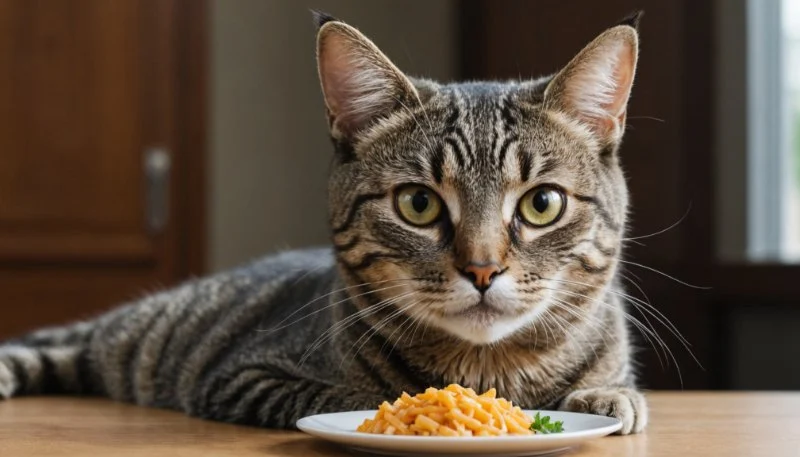
Understanding Pet Pancreatitis: Signs, Diet & Care
- 1 - What is Pancreatitis in Pets?
- 2 - Causes and Risk Factors of Pancreatitis
- 3 - Signs of Pancreatitis in Pets
- 4 - Diagnosing Pancreatitis in Pets
- 5 - Diet and Nutrition for Pets with Pancreatitis
- 6 - Care and Recovery Tips for Pets with Pancreatitis
- 7 - Real-Life Case: A Pet’s Battle with Pancreatitis
1. What is Pancreatitis in Pets?
Pancreatitis is an inflammation of the pancreas, an organ that plays a key role in digestion and regulating blood sugar. In pets, pancreatitis can range from mild to severe and, if left untreated, can lead to complications such as organ failure. It occurs when the enzymes produced by the pancreas become activated inside the organ, causing it to digest itself. This can lead to inflammation, pain, and potential damage to surrounding tissues.
While pancreatitis is more commonly seen in dogs, especially certain breeds, cats are also susceptible. Understanding pancreatitis and how it affects pets is crucial for recognizing the signs early and providing the necessary treatment to help your pet recover.
2. Causes and Risk Factors of Pancreatitis
The causes of pancreatitis in pets are not always fully understood, but several factors can increase the risk of developing this condition. Some of the most common causes include:

All Creatures Great & Small Animal Hospital
LexingtonFayette CountyKentucky
1020 Industry Rd #32, Lexington, KY 40505, USA
2.1 Diet
A high-fat diet is a major risk factor for pancreatitis. Pets that consume fatty table scraps, rich or greasy foods, or food meant for humans are at greater risk. It’s important to monitor what your pet eats to prevent this issue.
2.2 Obesity
Overweight pets are more prone to developing pancreatitis. Obesity can affect the function of the pancreas and increase the likelihood of inflammation. Maintaining a healthy weight through proper diet and exercise is crucial in preventing pancreatitis.
2.3 Genetics and Breed
Certain breeds are genetically predisposed to pancreatitis, such as Schnauzers, Yorkies, and Miniature Poodles. If you own a breed with a higher genetic risk, you should be extra vigilant about their diet and overall health.
2.4 Other Health Conditions
Pets with other health conditions, such as diabetes, high blood pressure, or hypothyroidism, may have a higher risk of developing pancreatitis. Additionally, certain medications, like corticosteroids, can increase the risk.
3. Signs of Pancreatitis in Pets
The symptoms of pancreatitis can vary depending on the severity of the condition. Here are some common signs that your pet may be suffering from pancreatitis:
3.1 Vomiting and Diarrhea
One of the most noticeable signs of pancreatitis is vomiting and diarrhea. If your pet is vomiting frequently or has loose, watery stools, it could be a sign of inflammation in the pancreas.
3.2 Abdominal Pain and Sensitivity
Pets with pancreatitis often experience abdominal pain. They may exhibit signs of discomfort when their abdomen is touched or may adopt a hunched posture to alleviate the pain. If your pet is unusually sensitive around their abdomen, it’s a red flag for pancreatitis.
3.3 Loss of Appetite
A sudden loss of appetite or reluctance to eat can be a strong indicator of pancreatitis. This is often accompanied by lethargy or general weakness.
3.4 Dehydration
Pancreatitis can lead to dehydration due to vomiting and diarrhea. If you notice your pet’s gums appearing dry or tacky, or if they seem lethargic and weak, dehydration could be a concern.
3.5 Fever
A low-grade fever is common in pets with pancreatitis, caused by inflammation. If your pet is running a fever or showing signs of discomfort, it may be a symptom of this condition.
4. Diagnosing Pancreatitis in Pets
If you suspect that your pet may have pancreatitis, it’s important to consult with a veterinarian for an accurate diagnosis. The vet will typically perform a physical examination, assess your pet’s symptoms, and may conduct additional tests to confirm pancreatitis.
4.1 Blood Tests
Blood tests are commonly used to diagnose pancreatitis. Elevated levels of certain enzymes, such as amylase and lipase, can indicate inflammation of the pancreas.
4.2 Ultrasound
Ultrasound imaging is another tool veterinarians may use to assess the pancreas for signs of inflammation or other complications. It can help visualize any changes in the size or structure of the pancreas.
4.3 Abdominal X-rays
In some cases, abdominal X-rays may be taken to rule out other potential causes of abdominal pain, such as intestinal blockages or tumors.
5. Diet and Nutrition for Pets with Pancreatitis
Diet plays a crucial role in managing pancreatitis. If your pet is diagnosed with this condition, their diet will need to be adjusted to help reduce inflammation and promote healing.
5.1 Low-Fat Diet
One of the most important dietary changes for pets with pancreatitis is switching to a low-fat diet. High-fat foods can exacerbate the condition, so feeding your pet a specially formulated low-fat food is essential. Your veterinarian may recommend a prescription diet or suggest low-fat alternatives.
5.2 Smaller, Frequent Meals
Instead of feeding your pet large meals, it’s often better to offer smaller, more frequent meals throughout the day. This helps reduce the workload on the pancreas and allows for better digestion.
5.3 Supplementing with Digestive Enzymes
Some pets with pancreatitis may benefit from digestive enzyme supplements, which can aid in the breakdown of food and improve nutrient absorption. Always consult with your vet before adding any supplements to your pet’s diet.
6. Care and Recovery Tips for Pets with Pancreatitis
Managing pancreatitis in pets requires careful attention to their diet, lifestyle, and medical treatment. Here are some tips for providing the best care during recovery:
6.1 Rest and Limited Activity
During recovery, it’s important to limit your pet’s physical activity to allow the pancreas to heal. Encourage your pet to rest and avoid strenuous exercise.
6.2 Follow-Up Vet Visits
Regular follow-up appointments with your veterinarian are essential to monitor your pet’s progress and ensure that their condition is improving. Your vet may recommend periodic blood tests or ultrasounds to track your pet’s recovery.
6.3 Monitor for Relapses
Pancreatitis can be a recurring condition. Watch for signs of a relapse, such as vomiting, loss of appetite, or abdominal pain, and seek immediate veterinary care if symptoms return.
7. Real-Life Case: A Pet’s Battle with Pancreatitis
Take the case of Daisy, a 6-year-old Beagle who was diagnosed with pancreatitis after experiencing severe vomiting and loss of appetite. Her owner, John, was devastated but quickly learned the importance of managing Daisy’s condition with a low-fat diet and regular vet check-ups. Over time, with the help of her vet and a carefully managed diet, Daisy made a full recovery and was able to enjoy a normal, happy life again. John’s experience is a testament to the power of early diagnosis and proper care in managing pancreatitis.








 Princeton Veterinary Hospital4.0 (821 reviews)
Princeton Veterinary Hospital4.0 (821 reviews) Thomas Ridge Kennels4.0 (17 reviews)
Thomas Ridge Kennels4.0 (17 reviews) All Creatures Animal Hospital4.0 (354 reviews)
All Creatures Animal Hospital4.0 (354 reviews) Fatty Paws Pet Boutique0.0 (0 reviews)
Fatty Paws Pet Boutique0.0 (0 reviews) CityVet | Lone Mountain Veterinary & Urgent Care4.0 (104 reviews)
CityVet | Lone Mountain Veterinary & Urgent Care4.0 (104 reviews) Petnificent Picks5.0 (1 reviews)
Petnificent Picks5.0 (1 reviews) How to Transition a Senior Pet to Easier-to-Eat Food: A Comprehensive Guide
How to Transition a Senior Pet to Easier-to-Eat Food: A Comprehensive Guide The Hidden Dangers in Common Pet Supplies: What You Need to Know
The Hidden Dangers in Common Pet Supplies: What You Need to Know Managing Chronic Conditions in Pets: Essential Diet, Medication & Lifestyle Tips
Managing Chronic Conditions in Pets: Essential Diet, Medication & Lifestyle Tips How to Build a Pet Emergency Kit: Essentials You Need
How to Build a Pet Emergency Kit: Essentials You Need Best Practices for Pet Grooming Frequency by Breed: Keeping Your Pet’s Coat Healthy
Best Practices for Pet Grooming Frequency by Breed: Keeping Your Pet’s Coat Healthy The Effect of Seasonal Allergies on Pets & How to Help
The Effect of Seasonal Allergies on Pets & How to Help